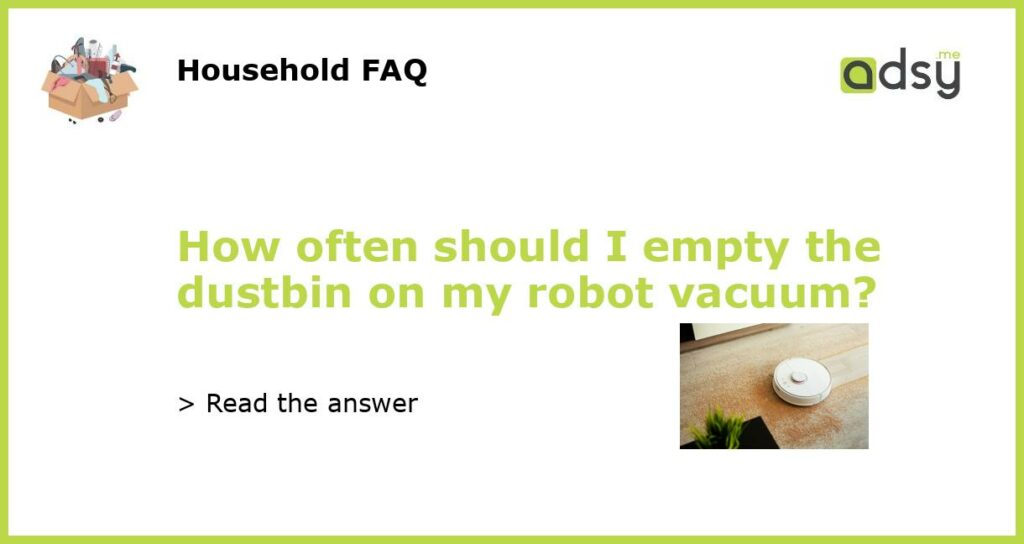Understanding your robot vacuum’s dustbin capacity
Robot vacuums have become increasingly popular in recent years, offering a convenient way to keep your floors clean without the hassle of manual vacuuming. One common question that many robot vacuum owners have is how often they should empty the dustbin on their device. The frequency at which you should empty the dustbin depends on several factors, including the size of the dustbin, the type of flooring in your home, and the amount of dirt and debris present. Let’s take a closer look at these factors to help you determine the ideal frequency for emptying your robot vacuum’s dustbin.
Factors to consider
When it comes to emptying your robot vacuum’s dustbin, there are a few key factors to consider:
1. Dustbin capacity: The size of your robot vacuum’s dustbin plays a significant role in determining how often you need to empty it. Robot vacuums typically come with dustbins ranging in size from 0.3 to 2 liters. If you have a larger dustbin, you may be able to go longer between emptying it compared to a smaller dustbin.
2. Flooring type: The type of flooring in your home can also impact how often you should empty your robot vacuum’s dustbin. Carpets tend to hold more dirt and debris compared to hard floors, so if you have mostly carpeted areas, you may need to empty the dustbin more frequently.
3. Amount of dirt and debris: The amount of dirt and debris in your home will also affect how quickly your robot vacuum’s dustbin fills up. If you have pets or frequently track in dirt from outside, you may need to empty the dustbin more often.
Recommended frequency
Based on these factors, here are some general guidelines for how often you should empty the dustbin on your robot vacuum:
1. Small dustbins: If your robot vacuum has a smaller dustbin capacity (around 0.3 to 0.6 liters), you may need to empty it after every cleaning cycle or every other cycle, depending on the size of your home and the amount of dirt and debris present.
2. Medium dustbins: Robot vacuums with medium-sized dustbins (around 0.6 to 1 liter) can typically go for several cleaning cycles before needing to be emptied. You may still want to check the dustbin after each cycle to ensure it doesn’t overflow.
3. Large dustbins: If your robot vacuum has a larger dustbin capacity (around 1 to 2 liters), you can likely go even longer between emptying it. Depending on the size of your home and the amount of dirt and debris, you may only need to empty the dustbin every few cleaning cycles.
Benefits of regular dustbin emptying
Emptying your robot vacuum’s dustbin regularly offers several benefits:
1. Improved cleaning performance: A full dustbin can impact your robot vacuum’s cleaning performance, as it may not be able to pick up as much dirt and debris. By emptying the dustbin regularly, you can ensure that your robot vacuum is operating at its best.
2. Prevent clogs and malfunctions: When the dustbin is full, it increases the risk of clogs, which can lead to malfunctions in your robot vacuum. Emptying the dustbin regularly helps to prevent these issues.
3. Maintain optimal battery life: A full dustbin can also put added strain on your robot vacuum’s battery, potentially reducing its lifespan. By emptying the dustbin regularly, you can help maintain optimal battery life.
The frequency at which you should empty the dustbin on your robot vacuum depends on factors such as dustbin capacity, flooring type, and the amount of dirt and debris present. Smaller dustbins may need to be emptied after every cleaning cycle, while larger dustbins can go longer between emptying. Regularly emptying the dustbin not only improves cleaning performance but also helps prevent clogs, malfunctions, and extends the battery life of your robot vacuum.






